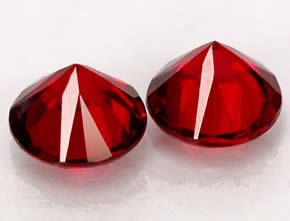Your Details
Your Details
|
Reviewed By Andreas Zabczyk
Culet in Cut GemstonesThe term "culet" is one of those technical terms in gemology that not many are quite sure how to pronounce. The proper pronunciation is kyoo-lit and the term comes from the Latin "culus", meaning bottom.
The culet is the tiny facet at the very bottom of faceted gemstones. Not every faceted gem has a culet. In many gemstones the culet is closed, meaning that the tip comes to a sharp point with no facet. Typically the culet facet is very small indeed and you need some level of magnification to detect it. Strictly speaking, gemologists say that a gemstone has a culet only in the case where a small facet is cut at the tip of the pavilion. A closed culet really means no culet at all. But many people in the gemstone trade still refer to the pointed tip as the culet. Sometimes you read that a round brilliant cut has 57 facets, and sometimes 58; the 58th facet is the culet. The culet facet has remained optional on many diamond cuts up to the present day, and was omitted from Marcel Tolkowsky's original designs for the round brilliant cut in 1919. Nonetheless, culet facets are common on modern brilliant cut diamonds. 
Brilliant-Cut Spinel
So why are some gemstones cut with culets? The chief reason is to protect the tip of the pavilion from chipping, especially when the gem is being handled during cutting or setting. Given the cost of many gem materials, the importance of this practical consideration should not be underestimated. If this is important, why then are some gemstones cut without a culet facet? The reason, in the minds of some gem cutters, is that a poorly cut culet can cause more problems than it solves. A very large culet facet may be visible to the naked eye and can look like an inclusion when you look down through the table of the gem. This is more of an issue with colorless gems like diamonds, where a large culet may appear as a dark spot in the center of the gem. In colored gemstones the concern is more with creating a window effect, where too much light passes through the bottom of the gem. |
